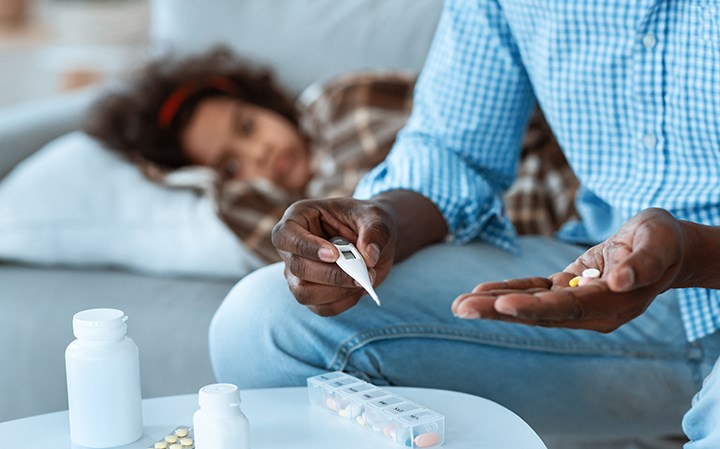
If you are caring for a person who has been diagnosed with COVID-19, follow this advice to protect yourself and others in the home, as well as those in your community.
Limit contact
- Only one healthy person should provide care.
- Do not share personal items with the ill person, such as toothbrushes, towels, bed linen, utensils or electronic devices.
- Use a separate bathroom from the ill person if possible.
- If not possible, the ill person should put the toilet lid down before flushing.
- If at all possible, try to ensure that the ill person has a designated bedroom and bathroom.
Protect yourself
If possible, people who are at higher risk of serious illness from COVID-19 should not care for someone with COVID-19. These people include elderly persons, those with chronic medical conditions (e.g., heart disease, diabetes) or compromised immune systems.
- Maintain physical distance from the ill individual, as much as possible.
- If you need to be within 2 metres of the ill person, wear a mask, disposable gloves and eye protection.
- Wear disposable gloves when touching the ill person, their environment and soiled items or surfaces.
- Do not reuse masks or gloves.
- Clean your hands often for at least 20 seconds, especially after contact with the ill person and after removing gloves, masks and eye protection.
- Dry your hands with disposable paper towels.
- If not available, use a reusable towel and replace it when it becomes wet.
- You can also remove dirt with a wet wipe and then use an alcohol-based hand sanitizer.
- Avoid touching your eyes, nose and mouth with unwashed hands.
Keep your environment clean
- Place used masks, gloves and other contaminated items in a lined container, secure the contents and dispose of them with other household waste.
- Place possibly contaminated laundry into a container with a plastic liner and do not shake.
o Wash with regular laundry soap and hot water (60-90°C), and dry well.
o Clothing and linens belonging to the ill person can be washed with other laundry.
- At least once daily, use household disinfectants or diluted bleach (1 part bleach and 9 parts water) to clean and disinfect surfaces that people touch often (e.g., toilets, laundry containers, bedside tables, doorknobs, phones and television remotes).
o Clean touch screens with 70 per cent alcohol wipes.
Monitor yourself for symptoms
- If you have always used the recommended precautions, then monitor yourself for symptoms for 14 days following your last contact with the ill person.
- If you have had direct contact with body fluids of the ill person (e.g., were coughed or
- sneezed on when you weren’t wearing a mask), contact your local public health authority for further instructions.
- If you develop symptoms, isolate yourself as quickly as possible and contact your local public health authority for further instructions.
Content provided by Alberta Health Services, myhealth.alberta.ca



